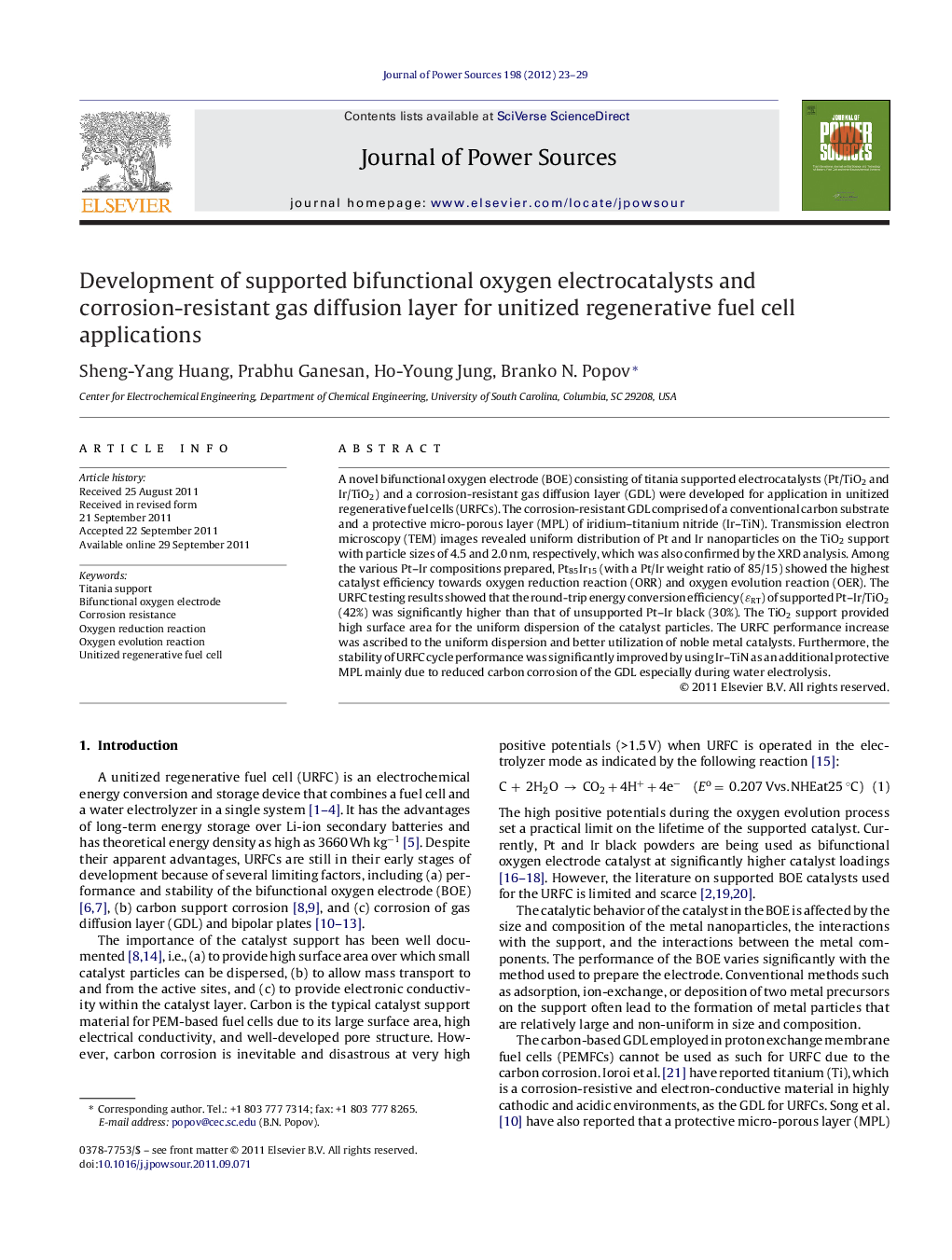| Article ID | Journal | Published Year | Pages | File Type |
|---|---|---|---|---|
| 1288385 | Journal of Power Sources | 2012 | 7 Pages |
A novel bifunctional oxygen electrode (BOE) consisting of titania supported electrocatalysts (Pt/TiO2 and Ir/TiO2) and a corrosion-resistant gas diffusion layer (GDL) were developed for application in unitized regenerative fuel cells (URFCs). The corrosion-resistant GDL comprised of a conventional carbon substrate and a protective micro-porous layer (MPL) of iridium–titanium nitride (Ir–TiN). Transmission electron microscopy (TEM) images revealed uniform distribution of Pt and Ir nanoparticles on the TiO2 support with particle sizes of 4.5 and 2.0 nm, respectively, which was also confirmed by the XRD analysis. Among the various Pt–Ir compositions prepared, Pt85Ir15 (with a Pt/Ir weight ratio of 85/15) showed the highest catalyst efficiency towards oxygen reduction reaction (ORR) and oxygen evolution reaction (OER). The URFC testing results showed that the round-trip energy conversion efficiency (ɛRT) of supported Pt–Ir/TiO2 (42%) was significantly higher than that of unsupported Pt–Ir black (30%). The TiO2 support provided high surface area for the uniform dispersion of the catalyst particles. The URFC performance increase was ascribed to the uniform dispersion and better utilization of noble metal catalysts. Furthermore, the stability of URFC cycle performance was significantly improved by using Ir–TiN as an additional protective MPL mainly due to reduced carbon corrosion of the GDL especially during water electrolysis.
► Pt and Ir nanoparticle deposition on high surface area titania. ► Pt/TiO2 and Ir/TiO2 as bifunctional oxygen electrocatalyst. ► Better round-trip-efficiency when compared to the state-of-the-art Pt and Ir black bifunctional oxygen catalysts.
